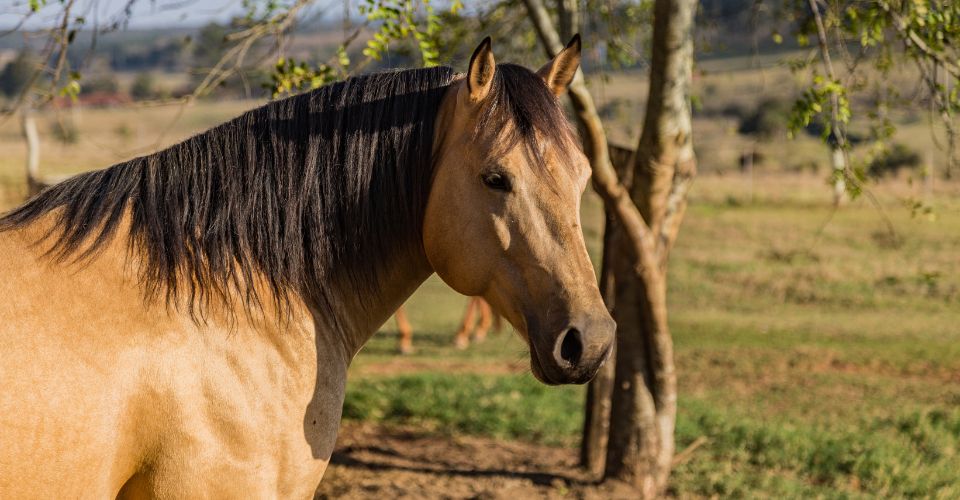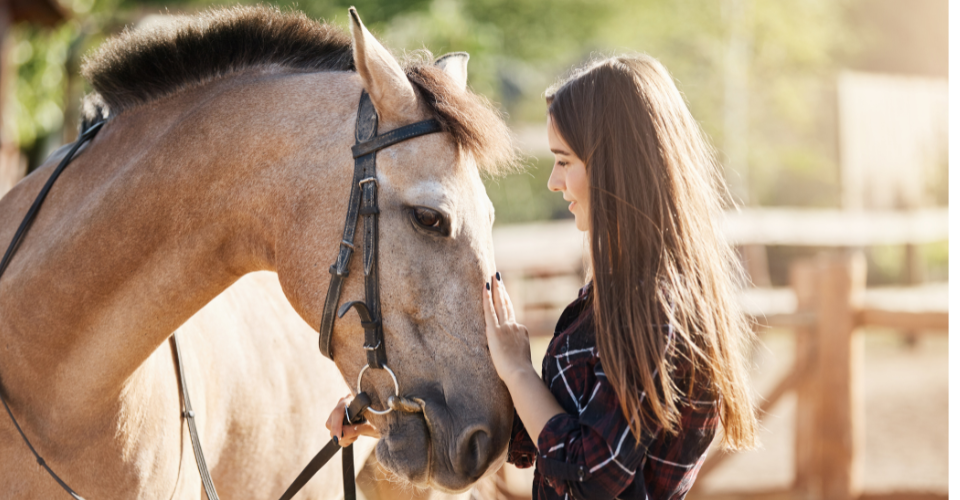Are you wondering how much weight can a horse carry? How many people can they carry people for horse riding?
In this article, all your questions will be answered. However, the horse’s optimum carrying capacity is 400 pounds. As per the 20% rule, the majority of horses can comfortably carry 20% of their body weight.
What Weight Can a Horse Carry Safely?
Horses are powerful animals that are used for riding purposes and capable of carrying weight. But you should be careful while putting weight on a horse, as extra weight may be beyond its capacity.
It is estimated that a horse can safely carry 20% of its body weight, but it can differ from horse to horse due to some other factors, such as breed and fitness. No doubt these factors play an important role.
In one study, a group of scientists studied eight horses. The horses were put through an activity test four times, carrying 15 percent, 20 percent, 25 percent, and 30 percent of their body weight.
The impacts of increasing weights on a horse’s health were measured using a variety of tests. They then looked for muscular pain, heart rate, and plasma lactate concentration found in a blood test.
Horses’ heart rates were substantially greater, and they had more severe muscle pain and tightness when they carried 25% of their body weight, according to a study carried out by the Journal of Equine Veterinary Sciences.
These variations became much more evident when the loads put on animal’s backs were raised to 30%, with plasma lactase concentrations changing.
According to the findings, a horse’s carrying weight should not exceed 20% of its body weight. However, the study did discover a negative link between a horse’s conformation and its weight-bearing capabilities.
Read: Black Horse Breeds
Factors Affecting the Weight Carry Ability of Horses
Fitness Matters
Weight-bearing ability may also be affected by the fitness and balance of the horse and rider. Their fitness and balance determine the horse and rider’s ability to use their bodies. Unfit or imbalanced horses will lack the strength to elevate their backs correctly and support the rider’s weight while keeping their balance. According to research, horses with a more developed topline can withstand a higher workload better, resulting in less muscular pain.
As they strive to maintain proper riding positions and combat the consequences of muscular exhaustion, an unfit rider can throw off a horse’s balance, resulting in more muscular pain.
Duration of Work
This is one of the important factors that will affect the weight-bearing ability of a horse. Activities performed at high speeds and for longer times will take more energy and effort. Horses can do such tasks only if they are fit. But even if a horse is incredibly fit, put it into energy-intensive work for longer periods, and it will exhaust, especially if the weight is more than it can comfortably carry.
Equipment and Hoof Care Should Be Proper
Additionally, keep in mind that your horse needs regular foot treatment. To provide a balanced, level surface for weight-bearing activities, hooves should be clipped. Consider adding shoes or protective boots to horses with hooves that wear down quicker than they can regrow, or those with weak soles, depending on recommendations from a competent equine specialist such as your farrier or veterinarian.
You should have equipment according to the activity. However, the saddle should properly fit at the horseback so the rider’s weight will be divided or will not cause muscle soreness.
Breed
There are many breeds of horses, with some excelling at racing while others are perfect for carrying loads—such as a heavy draft horse. Some horses are slender, while some are stockier. Definitely, as the strength of the horse differs from breed to breed.
For instance, the gypsy horses were specifically bred for carrying more weight than other horses.
Conformation
Conformation means the overall shape of the horse, especially the saddle area. The conformation of a horse affects its weight-carrying capacity considerably. Those with broad loins and thick legs can carry more weight than those with thin loins. They also recover faster after strenuous activities.
Weight and Metabolism
When a horse’s activity level is raised, its metabolism speeds up, and its dietary requirements increase as well. Similarly, when a horse’s weight grows, its metabolism speeds up, and caloric demands rise.
When a horse’s burden is increased, it frequently slows down to preserve energy. In addition, their stride length also reduces.
To preserve optimal health, you should take care of your horse’s nutritional and caloric demands when exercising it to its maximum carrying capacity.
How Much Is a Horse Strong?
Horses are, on the whole, tough creatures that excel in a variety of areas. Their strength is ingrained in their DNA, and their evolution has resulted in strong muscles, powerful lungs, and a big heart, enabling them to perform demanding tasks and run quickly and efficiently.
A horse’s strength is difficult to assess since it is dependent on the breed and the amount of weight it can support. Horses are already powerful in our view since they can carry us all day without exhibiting symptoms of weariness on their backs.
Why Should You Know a Horse’s Carry Capacity?
If you own a horse, it’s very important to know how much weight a horse can carry and limit horseback riding if it exceeds the horse’s capacity. In old times, people used horses as a mode of transport. They were used to transport goods and people from one city to another.
But now, the world is developed, so we use other modes of transport such as trains, trucks, and planes. But horse-riding is still a thing, cherished and enjoyed by all and sundry around the world. So, while a horse can comfortably bear the weight of the rider, make sure that it is not overloaded—especially when planning a trek to the mountains.
What Will Happen if We Overburden the Horse?
Here are a few issues horses can face if they carry excess weight.
Sore Muscles
Every activity demands a different duration and speed. If an activity is done at a fast pace, the muscles can be sored, causing pain and discomfort to the horse.
Behavior Issues
Horses are also living beings; if they are forced to do work and burden with extra weight, they might misbehave and will be hard to handle. Some of the behavioral issues associated may include aggression (towards people), fear and phobias, performance problems, sexual problems, and abnormal eating, to name a few.
Like other living things, horses also need good care, attention, and love.
Back Pain
If your horse is pushed to carry heavier loads than it can handle, it is more likely to develop back and balance problems. In the long term, it will affect not only its performance but also its lifespan.
What Is the Difference in Strength Between a Horse and a Human?
Overall, horses are far larger and stronger than the typical person. Their bodies evolved differently, giving them more power and greater strength than humans. However, when it comes to long-distance running, some people can outrun horses due to the way our bodies cool down, in comparison to how horses cool down their bodies.
Purpose of Horse
When buying a horse, it’s also important to consider whether it’ll be suited for the discipline in which it’ll be employed. Shorter horses are more suited to barrel racing, while taller horses are better suited to dressage.
Conclusion
To sum up, horses are strong animals known for strenuous work. As a rule, a horse can carry 20% of its weight—though some horses may exceed this. That said, much depends on other factors discussed above. Make sure that you have the right horse for the right work. The tasks should be assigned to the horse as per its weight limit.
FAQs
Is There a Weight Restriction When It Comes to Horseback Riding?
Generally, there is no fixed weight of a person for riding a horse. But the authorized riding facility sets the weight limits to avoid any harm to the horse or the person riding the horse.
How Many Pounds Can a Horse Pull Easily?
It varies from horse to horse. Healthy draft horses can pull 2000 pounds for a walk and 8000 pounds for a short distance. Other horses can’t pull this much weight as they are trained for other purposes.





